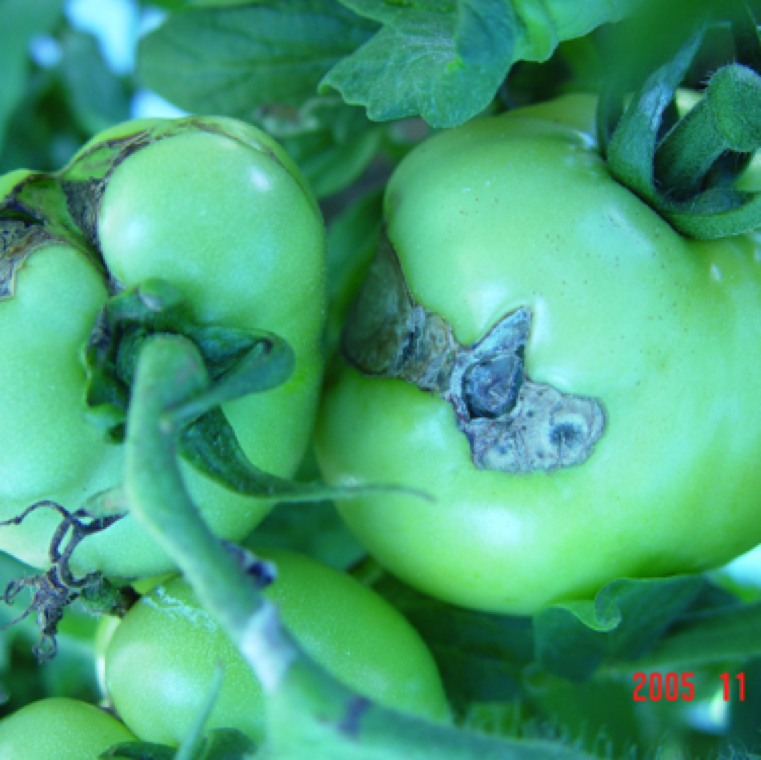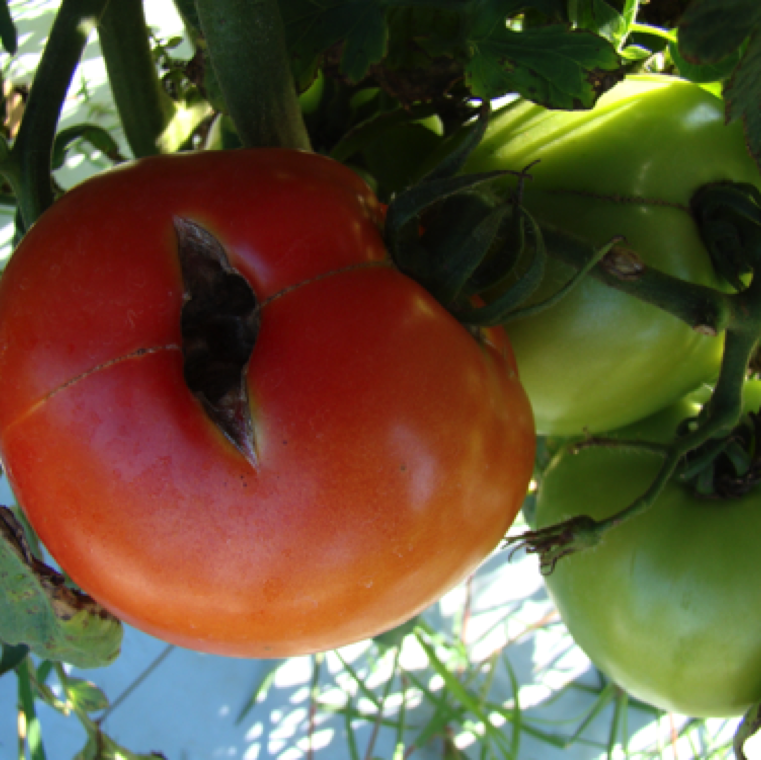

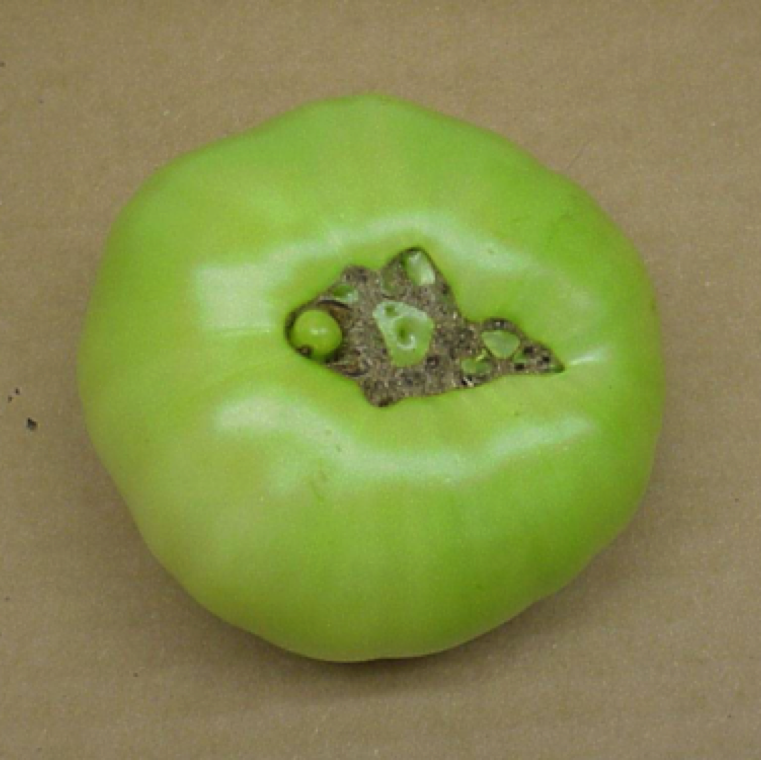
Catface symptoms most commonly occur at the blossom end of the fruit but it can also occur on the side of the fruit. The cause of catface in unknown, but there may be several factors causing fruit deformation.
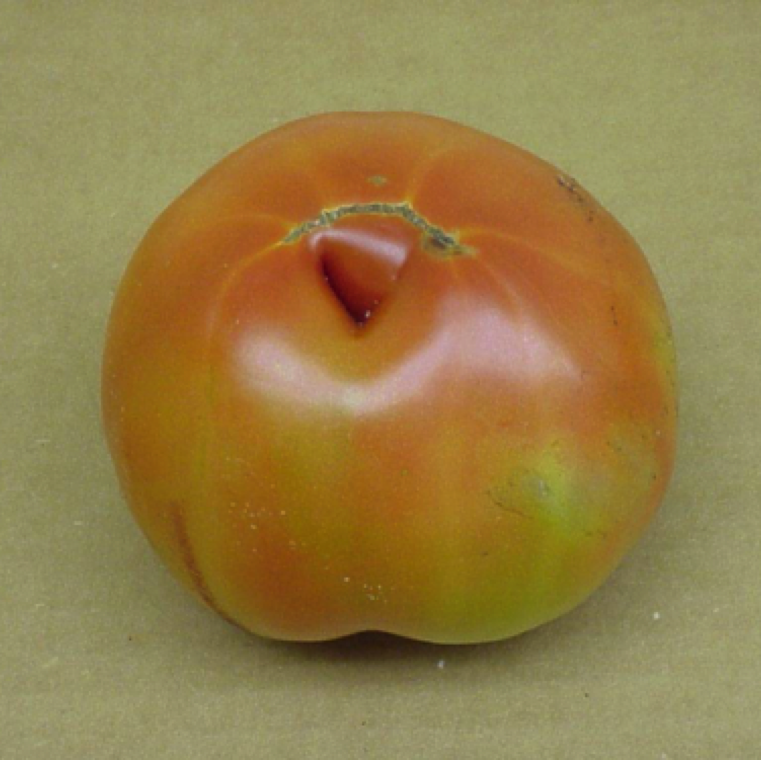
Catface is possibly caused by internal or external changes that occurs during the formation of the flower resulting in the abnormal development of the fruit.
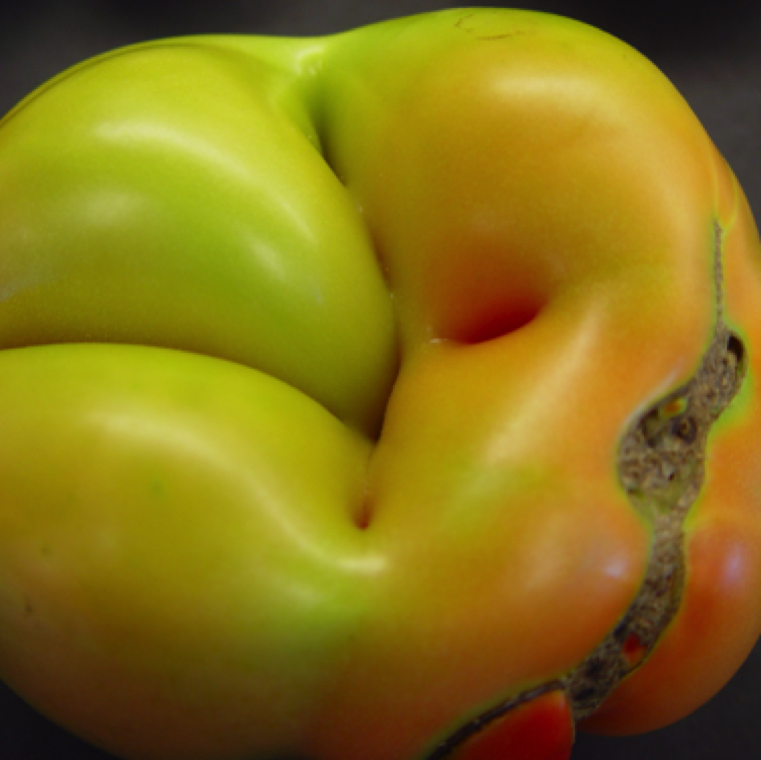
A fruit with severe blossom end catface symptom and scar formation. Fruits are non-marketable and can cause significant yield losses in some situations.
CATFACE
Cause: Not known
Tomato diseases
